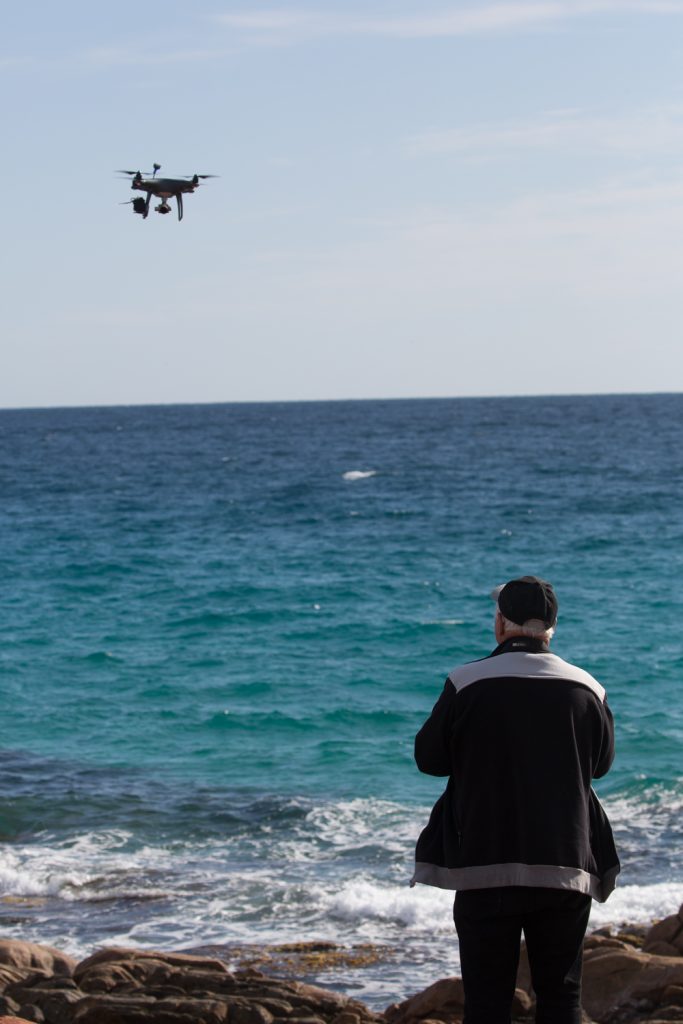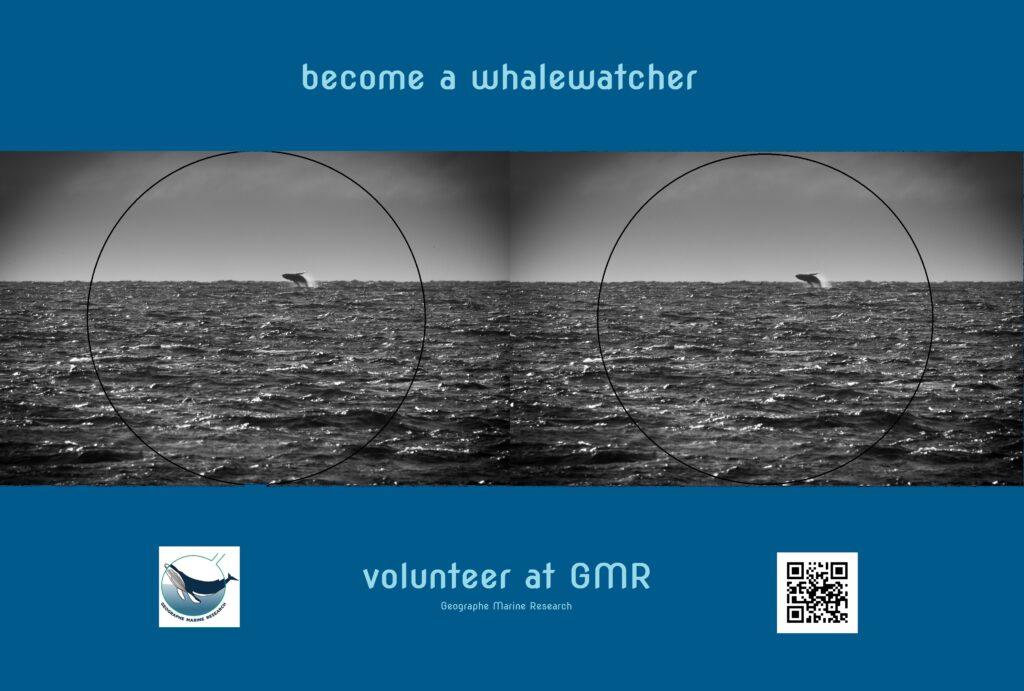
In November 2023 we have our exiting Blue whale monitoring project. How to be part of it you find here:

In 2022 GMR initiated a new monitoring project conducted from two lookouts. The objective of this monitoring was to identify the proportions of whales that pass through Geographe Bay compared to the total numbers of whales passing down the west coast. The monitoring was conducted on 14 days in September.
Whale observer’s comments.
“We get to see some amazing sights. Often whales will pass within meters of the rocks. The humpbacks in particular put on amazing displays of breaching, tail slapping and other acrobatics. Visitors often ask what the purpose of these displays are. To us, we feel that the whales enjoy it, but some research says it may well be a means of long distance communication. When we see a whale breeching, we often see another whale somewhere else in the bay breaching as if in response. We have seen calves who are likely to have lost visual contact with their mothers breech continuously, perhaps until they hear their mothers respond. Southern right whales also breach, but not as often as the humpbacks.”
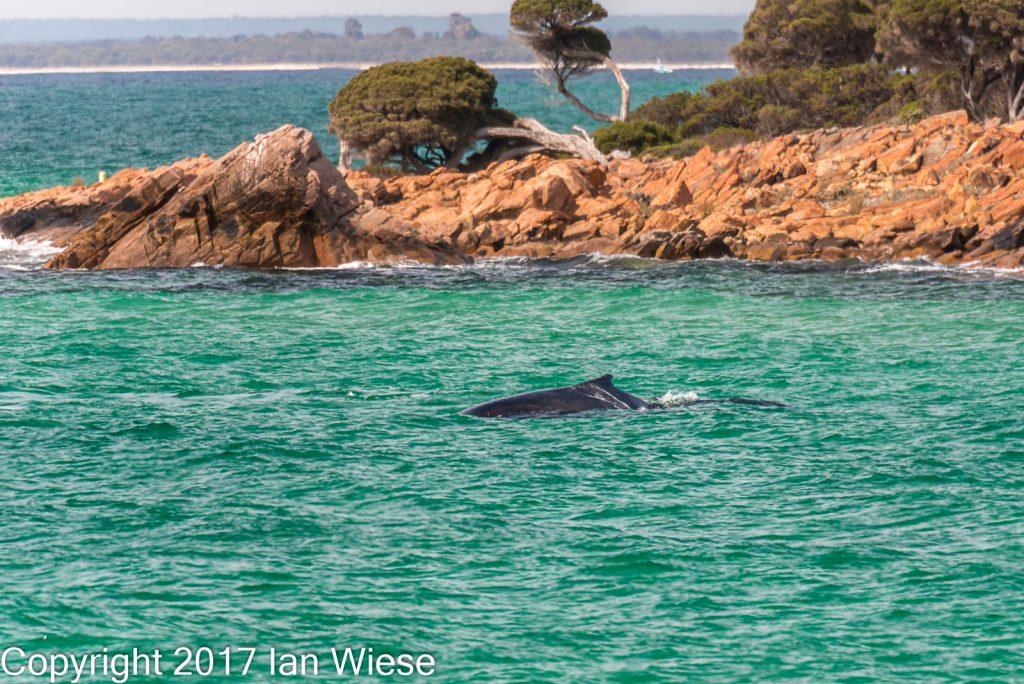
“We become knowledgeable about the species of whales that pass and many visitors come to the monitoring site to ask questions and learn, or to find out where to look for whales”.
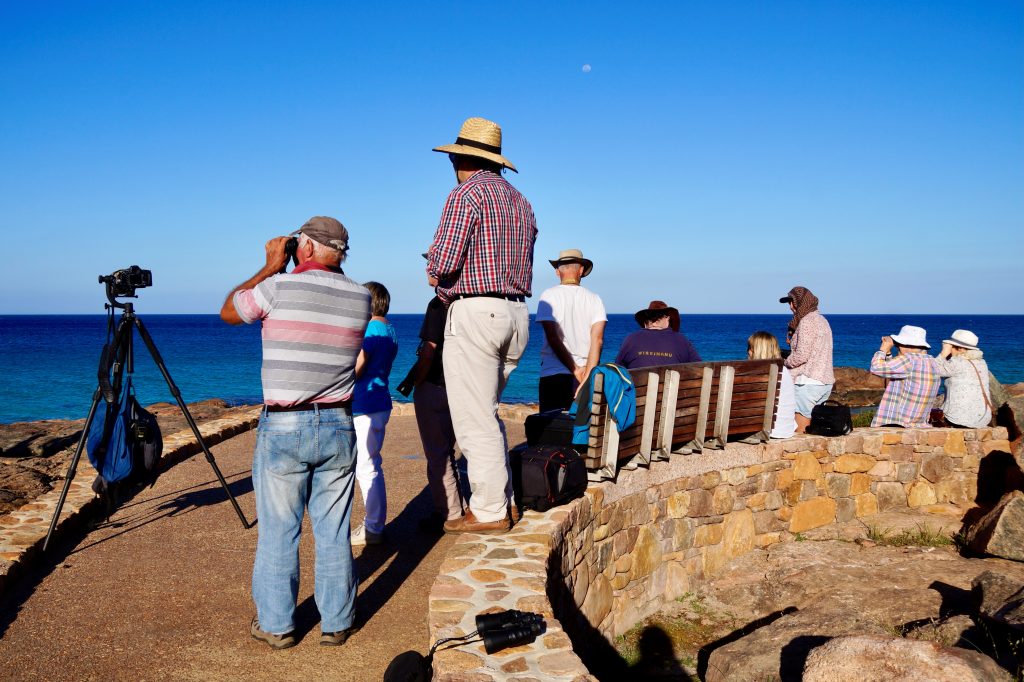
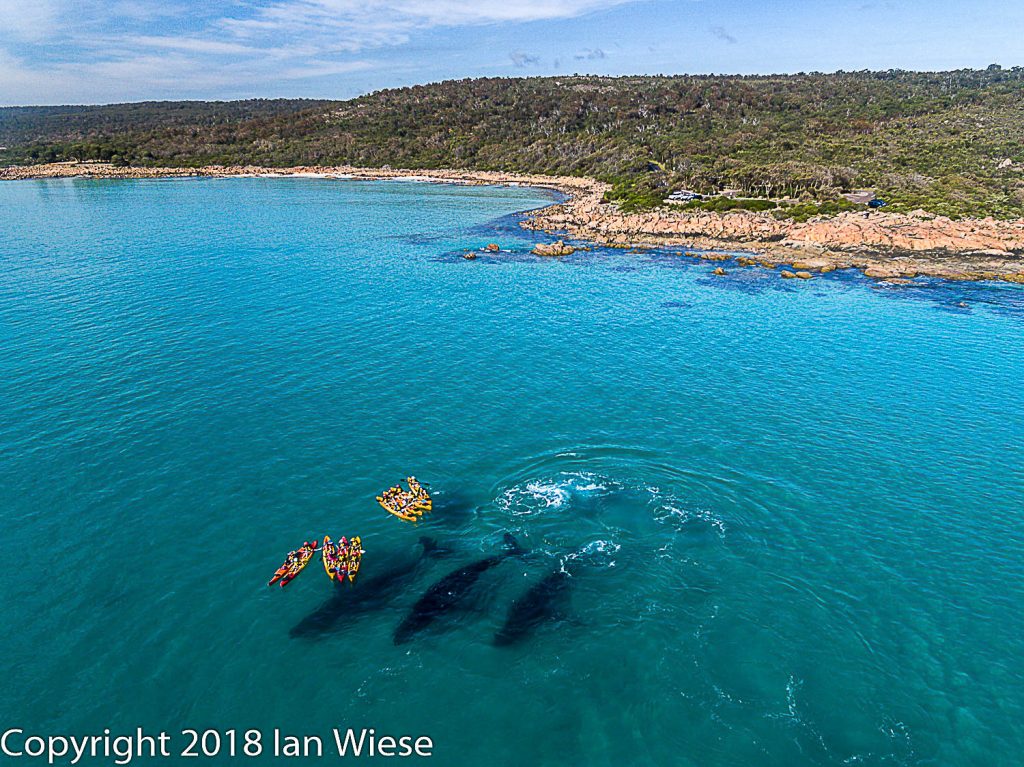
Drones
In recent years drones have become an important part of research. The drones operate under a permit from the Department of Biodiversity, Conservation and Attractions (DBCA), in particular from the Parks and Wildlife section. Without a permit drones are not allowed to fly within 60m of a whale. Initially drones were used to assist the volunteers monitor the passing whales by checking on species, and numbers, and providing location information. The drones have proven to be far more useful than first anticipated. They provide a means of identifying individual whales using Photo ID of southern right whales. For this species at our study site, drones can be immeasurably more useful than land based photos because they clearly show all the callosities (which look like white patches on the head) on both sides of the animal in a single photo. The behaviour of the whales can be observed without disturbing the whales. We have film of SRWs mating, feeding their calves, and interacting with humpback whales and dolphins.
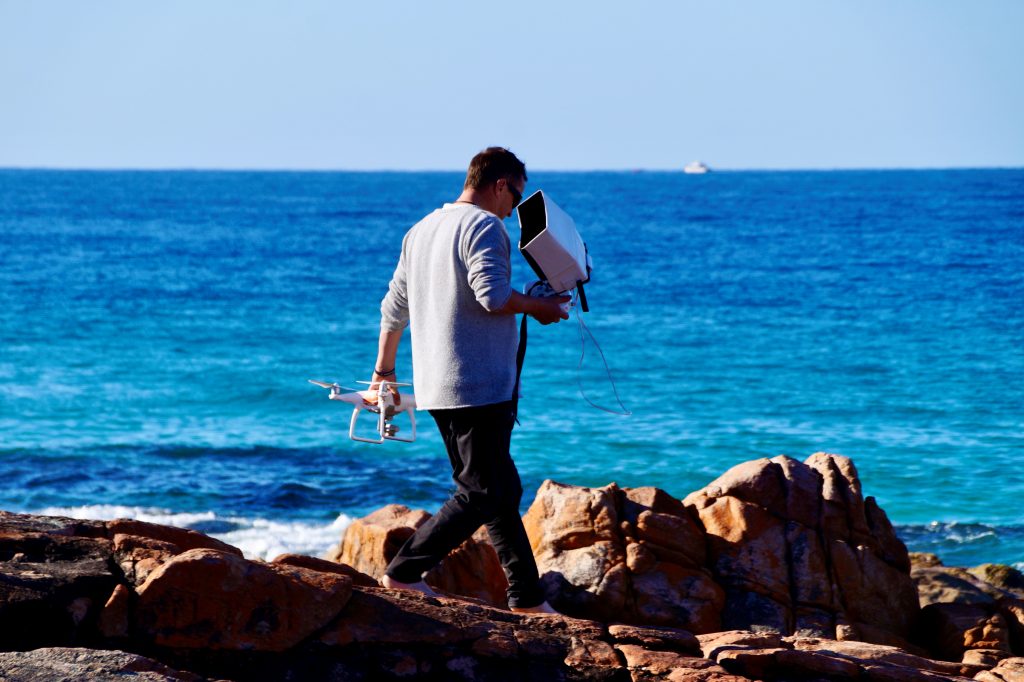
We are now using the drone research has started using photogrammetry to measure body characteristics and condition, and a Lidar attachment has been developed to allow accurate measurements of lengths to be taken.
